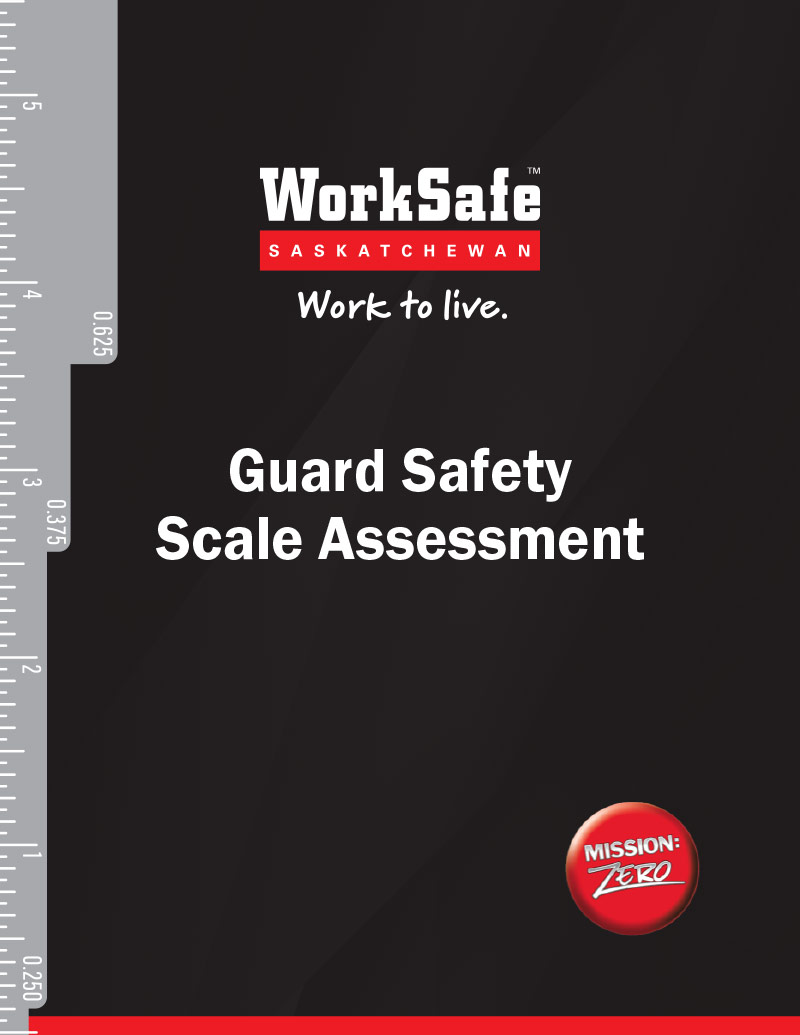Safeguarding machinery and equipment
Understanding the hazards associated with machinery and knowing how to control them significantly reduces the risk of injury for machine operators. Proper operation, including the use of machine guards, enhances both productivity and safety. Effective guarding techniques must prevent contact, be secure or tamper-proof, avoid creating new hazards, allow for lubrication without removal, and not interfere with machine operations.
Will your safeguards protect you?
Despite training and experience, predicting human behaviour around machinery is challenging. Machine-related injuries, such as crushed hands, severed limbs, lacerations, abrasions and fatalities, are all too common. In Saskatchewan, from 2010 to 2022, machinery contact injuries were the second leading cause of injury claims, with 5,174 injuries in 2022 alone, including nearly 300 serious injuries. Most of these injuries could have been prevented with effective safeguarding, proper lockout procedures, supervision and training.
Types of Safeguarding
There are several methods to safeguard machinery, including:
- Guards: Fixed, interlocking, adjustable or self-adjusting physical barriers to prevent contact with hazards.
- Devices: Presence sensing, pull-back, restraint, operational controls or gates to limit or prevent access to hazardous areas.
- Location or distance: Placing machines in areas where the hazards are not accessible.
- Automated feeding and ejection: Reducing operator exposure by automating these processes.
- Miscellaneous aids: Shields, feeding tools, holding devices or awareness barriers to protect operators and nearby individuals.
A well-informed machine operator understands the machine’s functions, the impact of operating controls and the need for maintenance and repairs. Clear operating instructions help operators recognize and prevent malfunctions, reducing the risk of injury. It is crucial to report any missing or inoperative guards immediately, as operating a machine without proper guarding is unsafe. Lockout and tagout procedures are essential during repairs or tool changes to prevent accidental start-up and injuries.

Ensuring safety with a free guard safety scale assessment
What is the guard safety scale assessment?
Our guard safety scale assessment is a comprehensive evaluation designed to analyze the effectiveness of guarding systems on your machinery. We assess barrier integrity, access points and emergency stop mechanisms to identify potential hazards and areas for improvement.
Why guard safety scale assessment matters
- Compliance with regulations: Our assessments ensure compliance with occupational health and safety regulations and CSA standards Z432-16, providing necessary documentation and compliance assurance.
- Prevention of accidents: Mitigate the risks of accidents, injuries and costly downtime by utilizing our assessment services.
The guard safety scale
The guard safety scale is a tool for measuring guard or barrier opening sizes and their distance from mechanical hazards, in compliance with CSA and ANSI guidelines. Designed based on human body measurements, it ensures guards are positioned to prevent incidental contact with hazards.

When used correctly, the guard safety scale will assure that the guard or barrier is designed and adjusted properly to protect the worker from incidental contact with a mechanical hazard.
How we can help
- Training and education: We offer comprehensive training sessions on using the guard safety scale and understanding its role in maintaining a safe work environment.
- Customized solutions: Our team collaborates with yours to develop tailored solutions that align with your specific needs and equipment requirements.
Sign up for a free guard safety scale assessment
Ensure your machinery is properly safeguarded. Sign up for a free guard safety scale assessment to enhance safety and compliance in your workplace by emailing us at worksafeinquiry@wcbsask.com.



